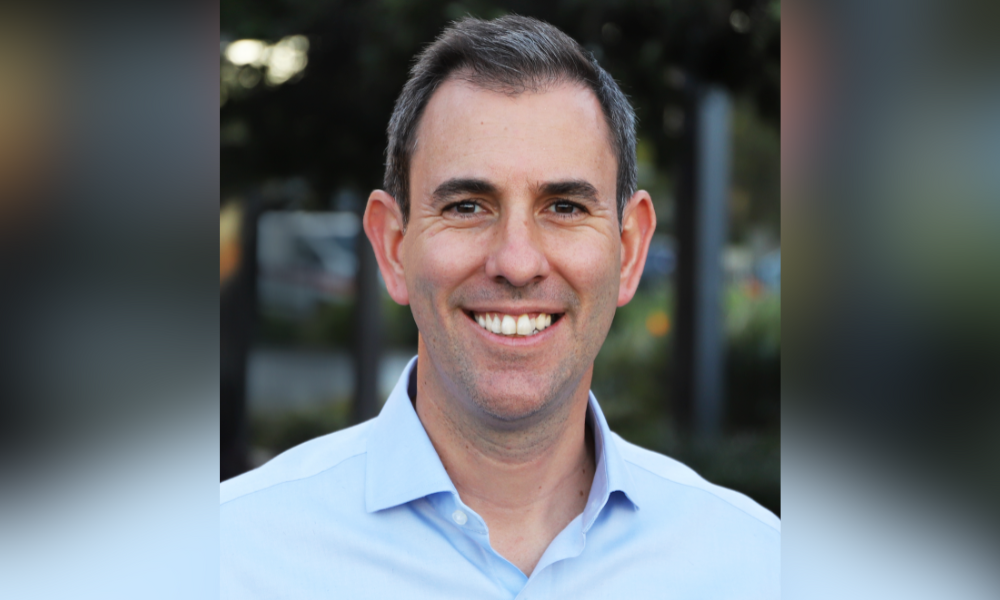First-home buyers stand to benefit most from proposal

The treatment of student debt on loan serviceability has emerged as a major topic of discussion in the mortgage broking industry.
Earlier this year, Treasurer Jim Chalmers (pictured) – whose future is in voters’ hands as they head to the polls next month – proposed sweeping changes to how banks can treat HECS-HELP debt when assessing what a borrower can repay.
Under the proposed changes, banks will be allowed, in some circumstances, to set aside borrowers’ existing student debt when applying responsible lending rules, which should theoretically increase borrowers’ lending power.
The proposals have received a mixed response, with critics arguing that they will only benefit a minority of borrowers whose HECS-HELP debts are nearing the end of their lifecycle. Others have written it off as a cheap vote grabber.
Nonetheless, a recent poll conducted during a Mortgage and Finance Association of Australia (MFAA) webinar revealed that 48% of brokers believe the proposed changes will have a “significant” impact on their clients.
The future of student loan on serviceability “is really important to brokers”, said Naveen Ahluwalia, MFAA’s executive, policy and legal, highlighting that nearly 80% of first homeowners rely on brokers to help them secure a home loan.
Elise Ivory, a mortgage finance expert and partner at law firm Dentons, agreed that rethinking the treatment of student loans on serviceability is a step in the right direction.
“My personal view is that it is very helpful for first-home buyers in particular… I know that student debt can be a big stress for some people, so therefore understanding its effect on their credit is a good thing,” said Ivory.
A flexible approach
Current industry practice is for banks to consider HELP debts when assessing loan serviceability.
“APRA (the Australian Prudential Regulation Authority) has conceded that this is generally appropriate because the inclusion of HELP repayments in serviceability assessments helps that bank determine whether they’re meeting responsible lending obligations,” said Ivory.
However, she noted that APRA has also acknowledged that HELP repayments are unique to other debt obligations like personal loans and credit card debt. This is down to student loan payment obligations being determined by income and not the size of the debt itself.
APRA has suggested two targeted adjustments in order to satisfy Chalmers’ directive. The first, explained Ivory, is to remove HELP debt from debt-to-income ratio calculations.
The second is to clarify guidance to address when it is reasonable for a bank to exclude HELP debt from serviceability assessments. This will primarily be when the debt is expected to be cleared within 12 months.
Like APRA, the Australian Securities and Investments Commission (ASIC) agrees that student debt has different characteristics to other forms of debt.
Both regulatory bodies are calling on lenders to take a more flexible approach to serviceability assessments. While there are ambiguities around how this will look in practice, Ivory said it “should help borrowers who do have the debt… to obtain loans”.
Ahluwalia said the MFAA will continue to monitor the situation as lenders make updates to their credit policies to reflect the changes to student debt on serviceability rules.
What about the buffer?
Student debt of serviceability feeds into a wider discussion around the current serviceability regime.
In October 2021, APRA introduced the 3% serviceability buffer requiring banks to assess a borrower’s ability to repay their loan at an interest rate three percentage points above the actual loan rate.
The buffer was previously set at 2.5%.
While the buffer has undoubtedly helped to keep default rates down, calls to reduce the size of the buffer around mounting.
“Nowadays in this current lending climate that policy means that clients have to service their loan at rates of 9-9.5% with the buffers added on top, this drives a lot of people out of the market and forces them to rent for longer, which adds more inflationary pressure,” Mario Reyad, director and lending specialised at NSW-based Expert Mortgages, told MPA.
“A more dynamic approach to calculating serviceability is required to match current conditions,” he said. “Policies like these need to be reviewed to ensure every Australian has the opportunity to own a place they call home in Australia.”
Grace Taylor, director at Queensland-based Taylored Finance Co., agreed that reducing the buffer “will foster a more favourable lending environment – enabling clients to secure better financial positions”.



